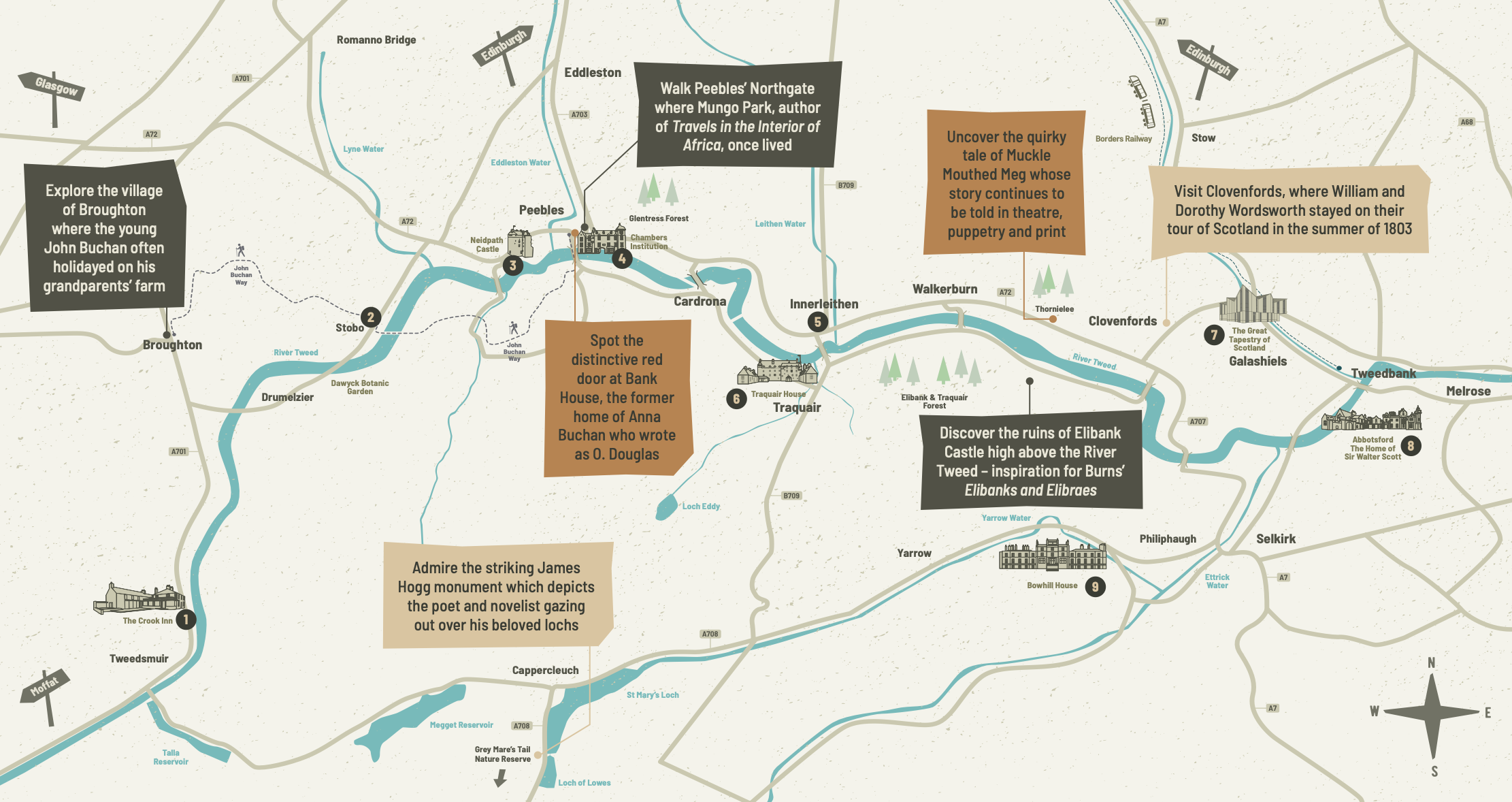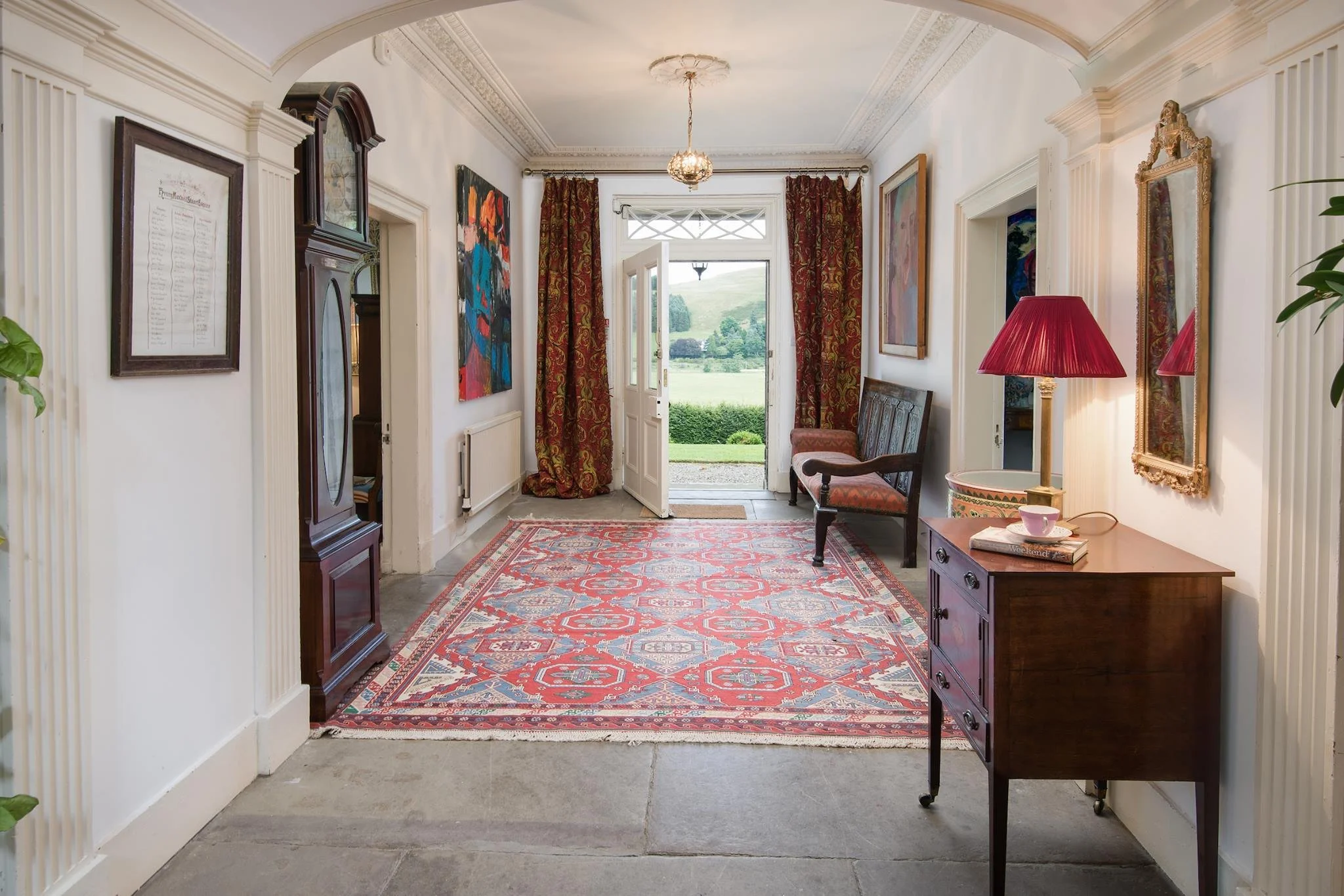tweed valley Words
Come and meet the writers inspired by our landscape, history and people
For hundreds of years the Tweed Valley has enticed writers. Some have passed through, taking powerful memories and images home with them where the experiences they gleaned were spun into words with a particular magic.
Others have lingered, making for themselves a place in an extraordinary landscape that can be soothing and severe, neighbourly and remote, pastoral and wild.
For the diarist Dorothy Wordsworth, who visited in 1803 with her brother William, being in the Tweed Valley felt like answering an elemental call that had been drawing her for years.
It’s not hard to see why Dorothy Wordsworth, and the many other writers who have visited and explored the area before and since, found such richness here. The landscape is ancient: the rounded hills were created millions of years ago from a primeval seabed driven skywards by the slow-motion meeting of landmasses; the valley’s slopes were then scoured, and the River Tweed formed, by the relentless action of long-vanished glaciers.
Soon after the ice retreated people came to the valley, with generations having lived and worked, loved and died here ever since. The physical landscape today is one of contrast and variety: lush woodlands yield to heather-covered moorland over which the west wind rasps; the gentle flow of the Tweed over its shoals in summer belies its mercilessness after a winter storm, when its waters reach greedily up the valley sides.
Into this complex landscape are woven fantastical stories. It’s said that Merlin, the wizard of Arthurian legend, was held captive by Morgana Le Fay by the river, while legend has it that St Mungo converted Merlin to Christianity and baptised him near Stobo – a moment depicted in a stained-glass window at Stobo Kirk.
Entangled in the River Tweed and its valley are countless human stories; and whether walking alongside the river, paddling down it or simply sitting on a bench listening to the hum of its flow, you cannot help but become part of those stories.
These tales, like the valley itself, have taken many forms – from ballads and novels to travel and nature writing and more. Similarly, there is no single way to experience the valley’s writing or the histories of those who created it. If short of time you can race alongside the river like a hero from a John Buchan novel. Or, if preferred, take a few days and explore at walking pace, like Dorothy Wordsworth or Mungo Park did.
This trail, like the Tweed Valley itself, can be shaped to suit according to your needs and interests. And perhaps, as you explore a place where the power of landscape is so ingrained in the written word, you too will be inspired to create stories of your own.
By Kerri Andrews
Kerri Andrews is a creative non-fiction writer living in the Tweed Valley. She is author of Wanderers, Way Makers, Nan Shepherd’s Correspondence, 1920-80 and Pathfinding: On Walking, Motherhood and Freedom.
Supported by Destination Tweed’s Community Grants Scheme, which is made possible by The National Lottery Heritage Fund.
Photo credits: Jacob Little; Ian Linton; Kerri Andrews; Howford House; Great Tapestry of Scotland










